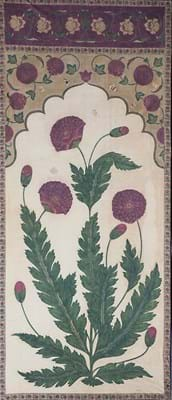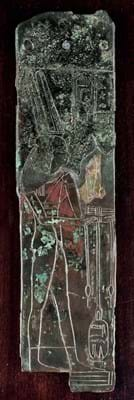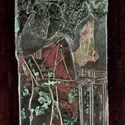When it came to a 7ft 4½in x 3ft 2in (2.25m x 97cm) Indian printed cotton textile from the 18th-19th century, the design is typical of the palampore, or bedspreads, produced on the Coromandel Coast for export to Europe, especially Holland.
While this was printed – the priciest examples are usually hand-painted – the craftsmanship involved in the complicated dyeing process was of the highest order and the £800-1200 estimate was always likely to be exceeded.
Nevertheless, the winning bid was a surprise when the cloth, mounted in a frame, sold to the UK trade at £21,000.
Back in time
From around 2000 years earlier, an Egyptian bronze plaque was another offering at the October 22 sale at West Norwood to go about 20 times over estimate.
Dated c.714-700 BC, the 11 x 2¾in (28 x 7.5cm) plaque is engraved with a standing figure of the high priestess Amenirdis I and inscribed in a cartouche The God’s wife, the divine votaress, the God’s hand Amenirdis, long may she live.
Probably looted in Thebes during the Persian invasion of 525BC, the plaque’s more respectable provenance dates to an archaeological dig in Memphis in 1901, then to the Cairo museum and to a private Swiss collection since the 1960s.
At Roseberys it was estimated at £900-1100 and sold to a London collector at £19,000.

















